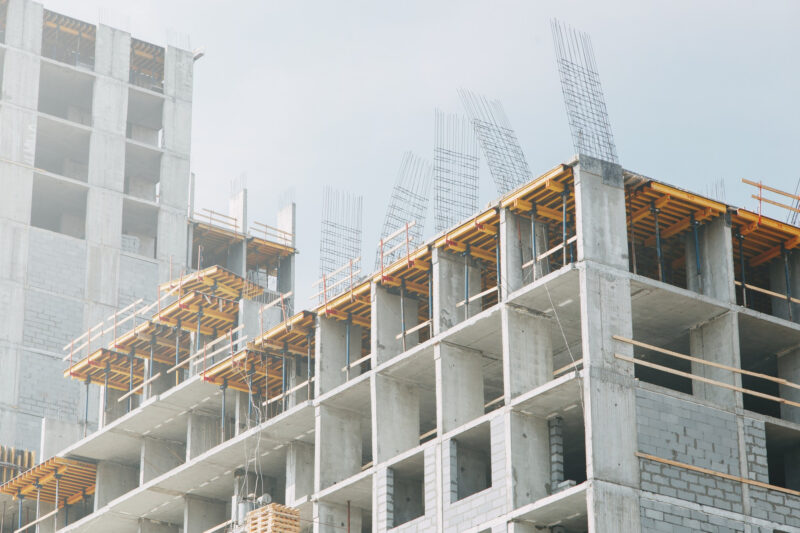The housing shortage in Melbourne (and more broadly - across Victoria) is a multifaceted issue driven by several interrelated factors. Understanding these causes is crucial for developing effective strategies to address the shortage and improve housing availability and affordability.

1. Rapid Population Growth
Victoria and Melbourne in particular have experienced significant population growth over the past decade due to a number of factors. According to the Australian Bureau of Statistics, Melbourne has been one of the fastest-growing cities in the country. This influx is generally considered to be driven by Melbourne’s comparatively robust job market, educational opportunities, and high quality of life.

Note: In 2022-23, the number of migrant arrivals increased to 737,000, up from 427,000 the year before. In 2020-21, there was an annual decrease of 71% due to the travel restrictions during the pandemic. While this provided some temporary respite from housing pressures, with the travel restrictions now lifted, the number of migrant arrivals has surpassed annual numbers recorded pre-pandemic.
Another factor impacting Melbourne’s rising population is that over the past 30 years, the average life expectancy in Australia has risen by almost 6 years, from approximately 77 to 83 years old. This means that the average person requires housing for a greater period of time, which inherently impacts supply.
At the same time, Victorians are having significantly fewer babies. Without international migration, the population would be set to start declining in just over ten years. Australia's total fertility rate dropped below 2.1 in the late 1970s and, despite a brief increase in the late 2000s, hit a low of 1.59 during the first year of the pandemic.
Considering factors such as migration, births, and deaths, Victoria has a net increase of approximately 186,000 people each year (as of 2023). Naturally, all these people need a place to live, putting significant pressure on housing supply.
2. Limited Land Supply
A substantial portion of the Melbourne population is concentrated in urban areas, leading to higher demand for housing in cities and suburbs. The preference for city living puts pressure on the existing housing stock, exacerbating the shortage.
Melbourne's geographical boundaries, such as Port Phillip Bay to the south and the Dandenong Ranges to the east, limit the available land for new housing developments. This natural limitation makes it challenging to expand urban areas outward.
Victoria has also implemented urban growth boundaries (UGBs) to control urban sprawl and protect green spaces and agricultural land. While these policies aim to create sustainable cities, they also restrict the availability of land for new housing, contributing to the shortage. Despite their goal, UGBs have not effectively promoted the development of a compact city, leading to continued urban sprawl.
3. Rising Construction Costs
The cost of building a house in Melbourne has increased significantly due to rising prices for construction materials and labour. Factors such as global supply chain disruptions and local labour shortages have contributed to higher construction costs.

Note: Australia’s construction workforce of approximately 1.35 million workers cannot keep up with demand. Master Builders Australia estimates that at least 593,000 new workers will be needed over the next five years to match supply and demand.
Shortages in skilled labour, alongside increasingly strict regulatory compliance, have added to the overall cost of construction, deterring developers from undertaking new projects or passing costs onto buyers.

4. Regulatory and Planning Challenges
The planning and approval process for new housing developments can be complex and time-consuming. Obtaining the necessary permits and approvals often involves navigating multiple layers of bureaucracy, which can delay construction and increase costs.
Zoning laws and land-use regulations can restrict the types of housing that can be built in certain areas. For example, low-density zoning in some suburbs limits the construction of higher-density housing, such as apartment complexes, which could accommodate more residents. Planning permits might be rejected due to zoning issues and not meeting council requirements, potentially adding years to a project's timeline.
5. Investment and Market Dynamics
A significant portion of housing in Victoria is owned by investors, both domestic and international. With Australians more often buying investment properties, we are seeing the demand contribute to higher property prices and reduce the availability of homes for owner-occupiers, particularly first-time buyers.

Note: Speculative buying and selling practices can drive up property prices. When investors and developers anticipate rising prices, they may hold onto land or properties longer, waiting for prices to peak, which can further limit the supply of available housing.
Additionally, higher inflation and interest rates have increased the cost of capital, reducing profits for new property investments and stagnating supply.
6. Socioeconomic Factors
Income disparities and wage stagnation have made it increasingly difficult for many residents to afford housing. While property prices and rents have surged, incomes have not kept pace, leading to affordability issues.
Changes in housing preferences, such as a growing demand for smaller households and apartment living, have not always been matched by the types of housing being built. This mismatch can contribute to a shortage of suitable housing options.
Conclusion
The housing shortage in Melbourne is driven by a complex interplay of factors, including rapid population growth, limited land supply, rising construction costs, regulatory challenges, market dynamics, and socioeconomic factors.
Addressing this shortage requires comprehensive and coordinated efforts from the government, industry, and the community to increase housing supply, streamline regulations, manage urban growth, and ensure affordability. Keep in mind that if you are in the market, property buying agents can leverage their extensive networks and market knowledge to help you navigate these challenges and secure a property.
Only through such multifaceted strategies can Melbourne hope to meet the housing needs of its residents and create a more equitable and sustainable housing market.














